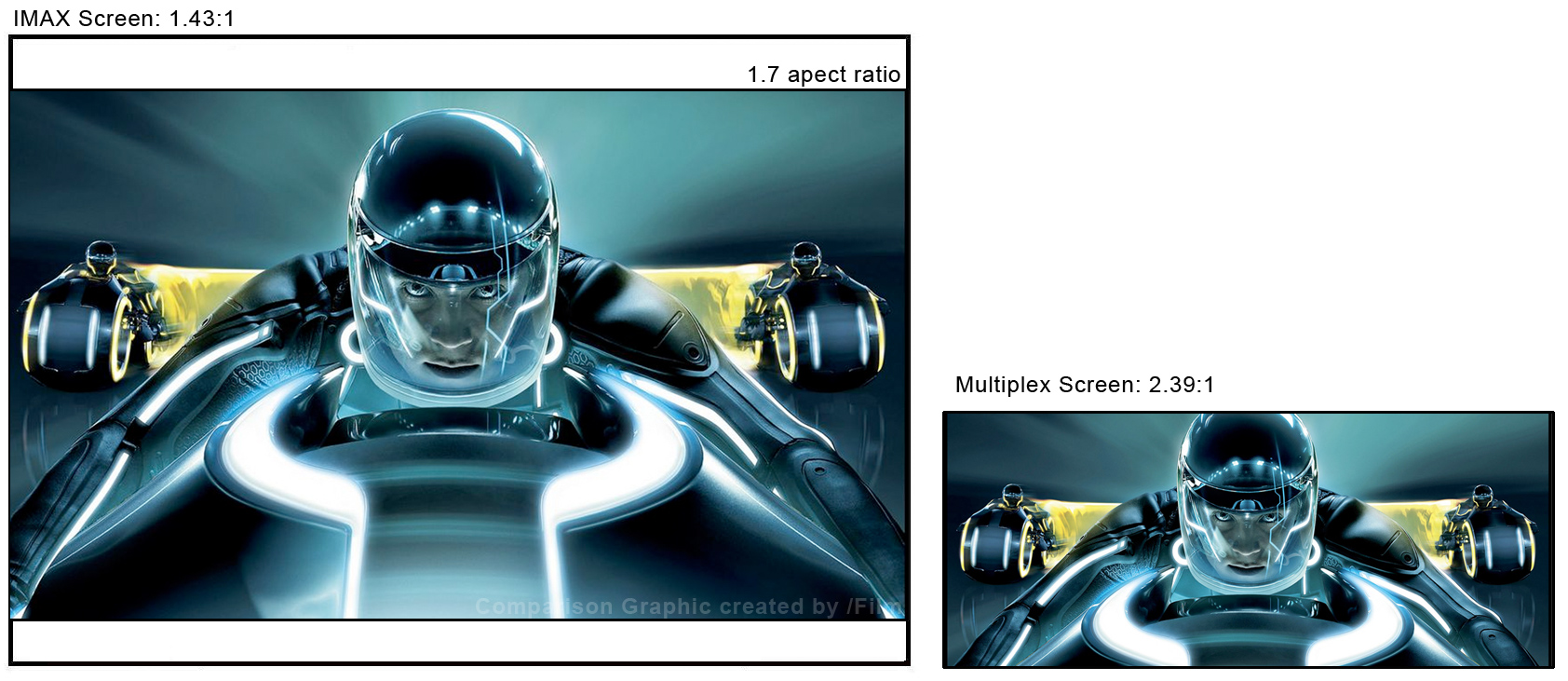I've never seen a true IMAX film in the 70mm format, unfortunately (none near to me), but I know from experience with digital IMAX that their screens are more of a 'widescreen' affair compared to the 'real' IMAX's square, 4:3-type aspect ratio (I don't know much about aspect ratios, forgive me; I know that 4:3 is standard, that 16:9 is widescreen and that it relates to width/height of the image). When native IMAX films are converted for IMAX digital theatres, by how much are they cropped?
I found a picture to show what I'm talking about
:

Also, are IMAX-converted films (e.g. Guardians of the Galaxy) cropped in order to fit the 70mm screens? Cropping the tops of 70mm for digital showings isn't too bad (as you can see with the Dark Knight you don't miss too much detail, but that was filmed in a certain way to suit the nature of filming with IMAX cameras), but wouldn't cropping the sides of the DMR to make it suitable for 70mm showings lose you quite a bit more detail (remember the letterbox/pan-and-scan DVDs?) as can be seen below with LOTR (I know that it wasn't filmed in IMAX; I'm using it as an example of the cropping in general).

I'm asking the second question b/c of a statement I found on Wikipedia on a page entitled 'List of IMAX DMR films' (obviously not the best but the only place I could find clear info on whether 70mm screens show DMR films or not):
"However, since 2002, some feature films shot with digital cameras or on regular 35mm film stock have undergone IMAX Digital Media Remastering (DMR) processing for showing both in 70mm IMAX theatres and in Digital IMAX theatres."



























 Linear Mode
Linear Mode

